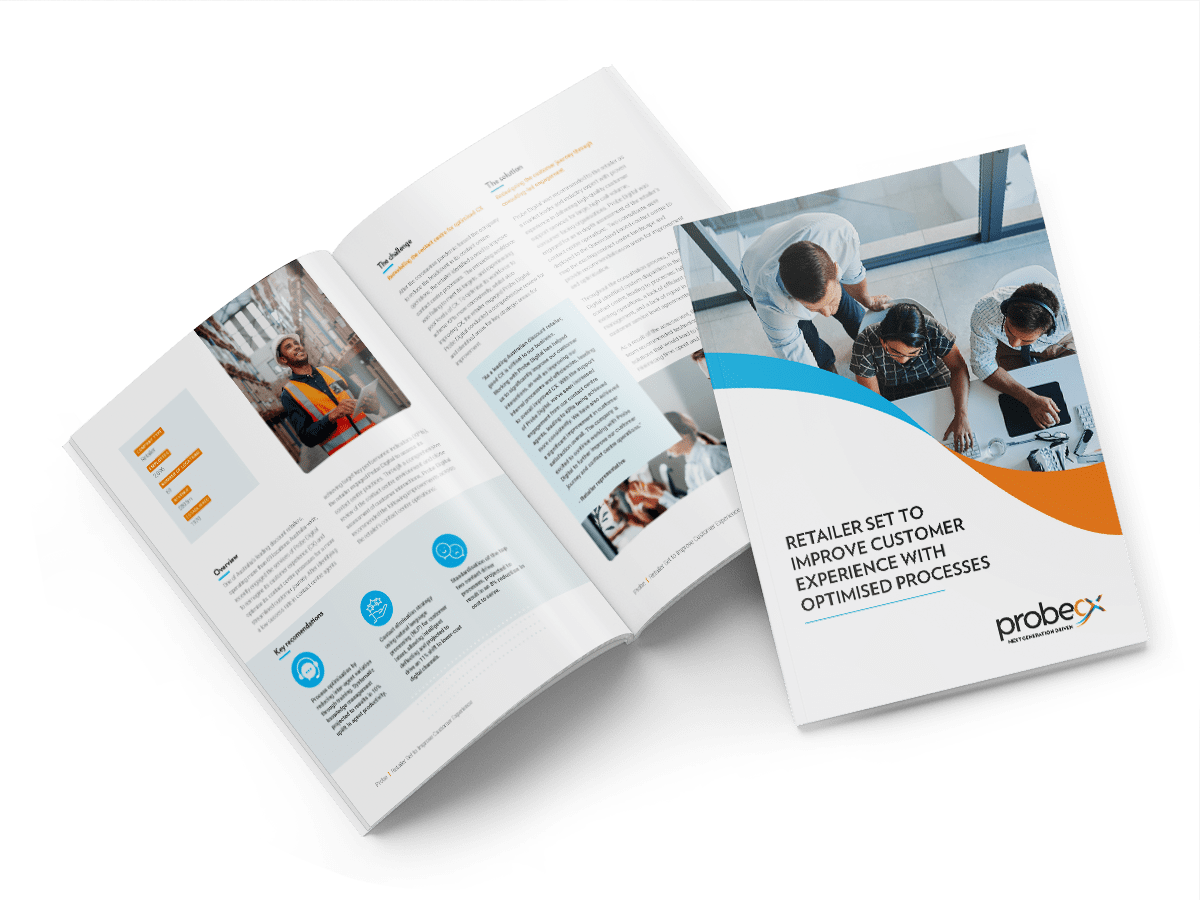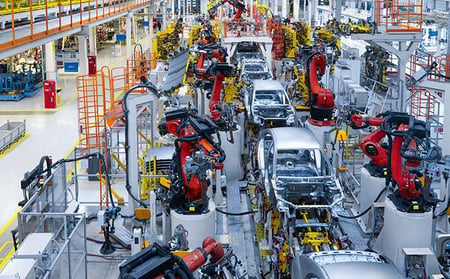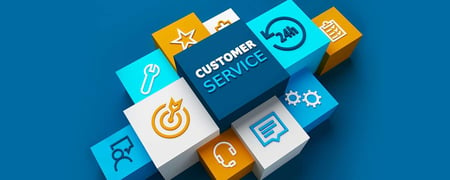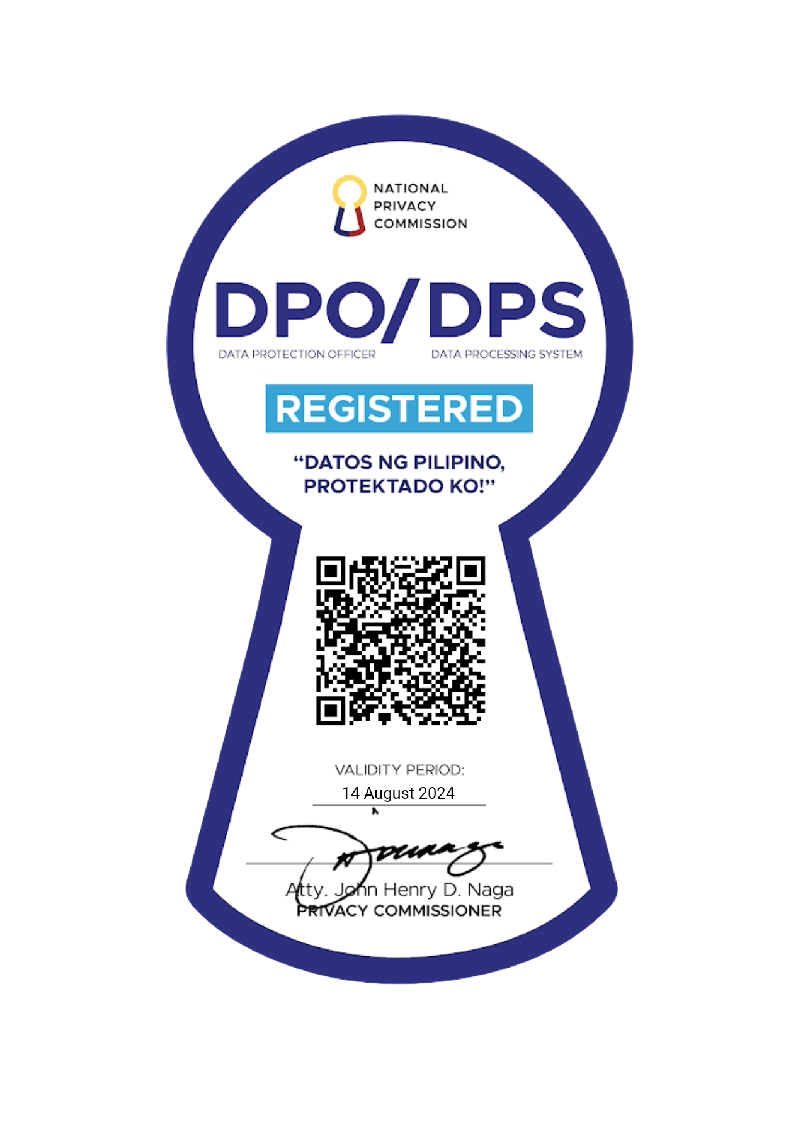-
About Us
Probe CX is a tech-powered, global customer experience organisation that amplifies human capabilities with technological excellence.
-
Vision and Culture
We help our clients become modern digital organisations by combining the latest technology with people, process and data.
-
Executive Team
Meet the team with unmatched experience committed to helping organisations create environments for digitally-enabled CX to thrive.
-
Compliance
Industry-recognised certifications to protect what matters most to our clients and their customers.
-
Locations
Over 19,000 team members delivering exceptional customer experiences across five countries.
-
Reasons to choose Probe CX
The top nine reasons to get more closely acquainted with Probe CX.
TECHNOLOGY & TRANSFORMATION SERVICES
 Creating exceptional customer experiences by 'doing it better'
Creating exceptional customer experiences by 'doing it better'
Optimise your customer experience by designing, deploying and managing digital solutions customised to your unique needs.
Continue reading- Blog
- 7 ways to use technology to improve customer experience
7 ways to use technology to improve customer experience

Finding No 1 – 68% of CX experts strongly believe that expectations from customers are rising.
Finding No 2 – 43% of CX experts consider customers more impatient than ever.
Finding No 3 – 47% of CX executives believe it is getting harder to please customers.
Finding No 4 – More than 50% of CX executives believe consumers are more willing than ever to switch brands if they are unsatisfied.

While price and product were always the two primary ways to win the hearts of customers, the game has changed in recent years. Research has found that customer experience has officially overtaken both as the key to attracting and keeping business, with other data showing that people who have a positive CX are 54% more likely to make another purchase.
Given the changing expectations of the spending public, today’s businesses clearly need to think outside the square when it comes to customer experience. Traditional customer service methods will only deliver results to a certain point and that is where technology comes into play. Digital tools that were unheard of a few years ago are today driving the success of many organisations’ CX strategies, while more technologies are ready to emerge to inspire the customer experience of tomorrow.
As businesses search for the secret formula for a more positive customer experience, here are a selection of the technologies that are helping companies win favour with consumers, increase brand loyalty and, most importantly, drive sales growth.
The Cloud
The cloud is such a pivotal part of modern businesses that any organisation yet to embrace the concept stands accused of having their head in the clouds. The days of needing to physically be in the ‘office’ to access company resources are over, with cloud solutions allowing staff to do so from any device with a network connection. This is particularly important given the number of sales channels now available to customers – from brick-and-mortar stores to websites and mobile apps – with more certain to arrive as new technologies emerge. All those channels increase the need for brands to gather and centralise data and it is cloud technology that is allowing them to do so. It is little wonder studies have found that 57% of businesses consider the improvement of customer support or services is a key reason for investing in cloud solutions.
Data Collection
Technologies such as surveys, interaction analysis and social listening tools are helping businesses know their customers better than ever. Collecting qualitative and quantitative data on customers and their experiences allows them to combine data and link their perceptions to their behaviours when engaging with the brand. Such technologies also ensure results can be monitored over time and feedback collected to address changes in customer interactions.
Chatbots
Here’s a fun fact for any millennials reading – consumers were once prepared to wait until the hours of 9am-5pm to make a business enquiry … and only on weekdays. Of course, the rise of smartphones and online searches means today’s customers expect immediate customer service and chatbots are enabling businesses to deliver it 24/7. Better still, artificial intelligence is helping chatbots engage in even better conversations with humans over the internet, which is great news for customers and organisations alike. While research found chatbots were expected to trim business costs by more than $8 billion per year by 2022, the reassuring factor for executives is they are increasingly winning favour from customers who relish their convenience and instant gratification. After all, one study found more than 87% of consumers report having positive or neutral chatbot interactions.
Virtual Reality
Of all the recent technologies to emerge, virtual reality (VR) has arguably been the most potential to completely reinvent the consumer experience as we know it. Given its ability to provide a complete sensory experience unlike any other technology, VR is helping businesses to motivate consumers to interact with their products and brands in new ways. One example was legendary Irish brewer Guinness, which leveraged the power of the technology to introduce consumers to its latest range of beers at specially constructed VR tasting booths at supermarkets across the UK. Under the VR eye of its master brewers, the unsuspecting buyers experienced an immersive journey that featured the right colours, textures, sounds and movements to attune them to the all-new fresh flavours.
Voice Technology
Having established themselves in millions of homes, devices such as Google Home and Amazon Echo are no longer dropping jaws but their impact on customer experience cannot be understated. Almost 40 million people in the US were expected to shop via a smart speaker during the past year, with brands that are using voice to supplement other experiences ahead in the game to engage customer loyalty and boost their omnichannel offering. With time of the essence these days, the ability for people to use voice commands is allowing them to access a faster shopping experience and, in turn, increase their likelihood of making repeat purchases. Data has shown consumers that use Echo to make purchases are among Amazon’s most loyal customers, spending an average of $1,600 per year – or 66% higher than the average Amazon customer.
Personalisation
Technology is playing a key role in allowing companies to increase personalisation – that is, use customer behaviour insights to promote services or show ads only to those consumers most likely to be interested in the company’s product. It is all about relevance, with customers experiencing higher customer satisfaction if they receive more messages that are relevant to them – not to mention more sales and conversions for the business itself. Personalisation also makes people feel more special, a key driver of increased customer loyalty. If you’re searching for an example of a business that does personalisation well, look no further than Spotify and its amazing algorithm that creates new individualised playlists based on the data of the music one likes listening to.
Onboarding Automation
First impressions are crucial in any relationship and one way to make a winning start with a customer is to use automation technology to deliver an onboarding process that leaves a smile on their face. By adopting quality CX automation processes, a business can ensure a smooth and seamless introduction to the company, with automated welcome and introduction messages and automatic notifications to relevant employees and departments among the digital tools available. CX automation can be implemented during any part of the customer journey and when done correctly can boost retention rates, increase engagement and improve overall customer experience.

Summary
The benefits of positive customer experience are obvious. Customers who enjoy quality interactions with a company tend to buy more, care less about prices and post positive reviews. They are also more likely to become loyal advocates and that can be crucial for business growth. Every opportunity must be made to improve CX and that includes exploring, developing and deploying technologies that build a positive experience. From the moment they engage with a website to when they receive an automated invitation to review the service or product they received, it is all about evoking a positive feeling now and reaping the rewards later.
Integrating digital interventions and solutions into the customer journey is a crucial step in delivering an improved CX. Learn how one of Australia’s leading full-service supermarkets did just that and achieved significant results including a 41% decrease in effort to service customer interactions and a 28% shift from conventional voice channels to digital channels such as SMS and voicemail.
Related Articles
Technology
8 RPA trends to watch
From hyperautomation to low-code platforms and increased focus on security, learn about the latest developments shaping the world of automation.
Customer Experience CX
What is closed-loop customer experience management?
It is one thing to receive feedback. It is another to use it to inspire positive change. Discover the power of closing the loop.
Technology
RPA in finance and accounting - a digital transformation
The finance and accounting sector is burdened by repetitive and time-consuming tasks, which is why robotic process automation is ideal...
© Copyright 2024 Probe CX | All Rights Reserved
Privacy Policy | Financial Hardship Policy | Whistleblower Policy | Complaints Procedure | Supplier Code of Conduct | Make a Payment | Client Login






